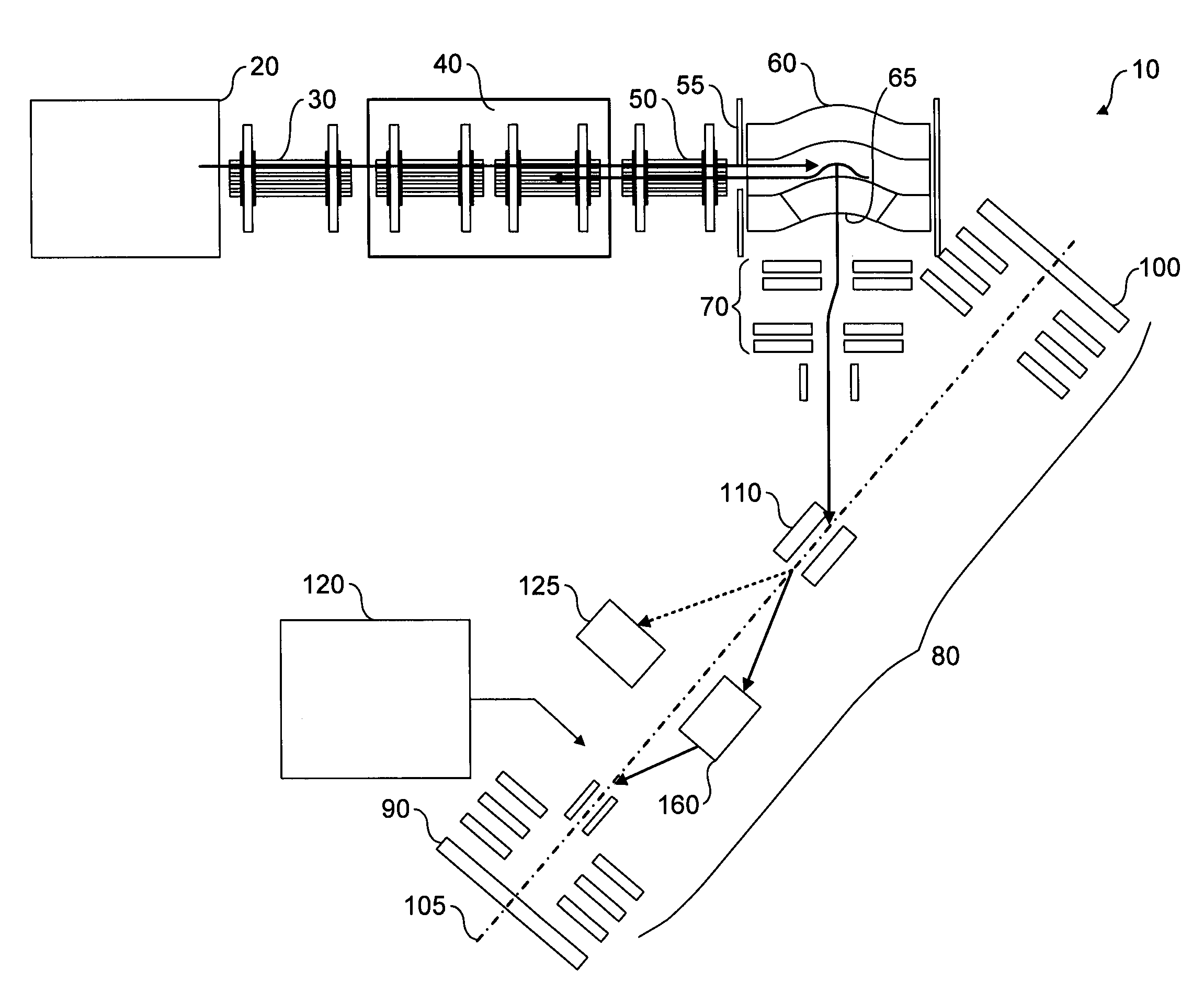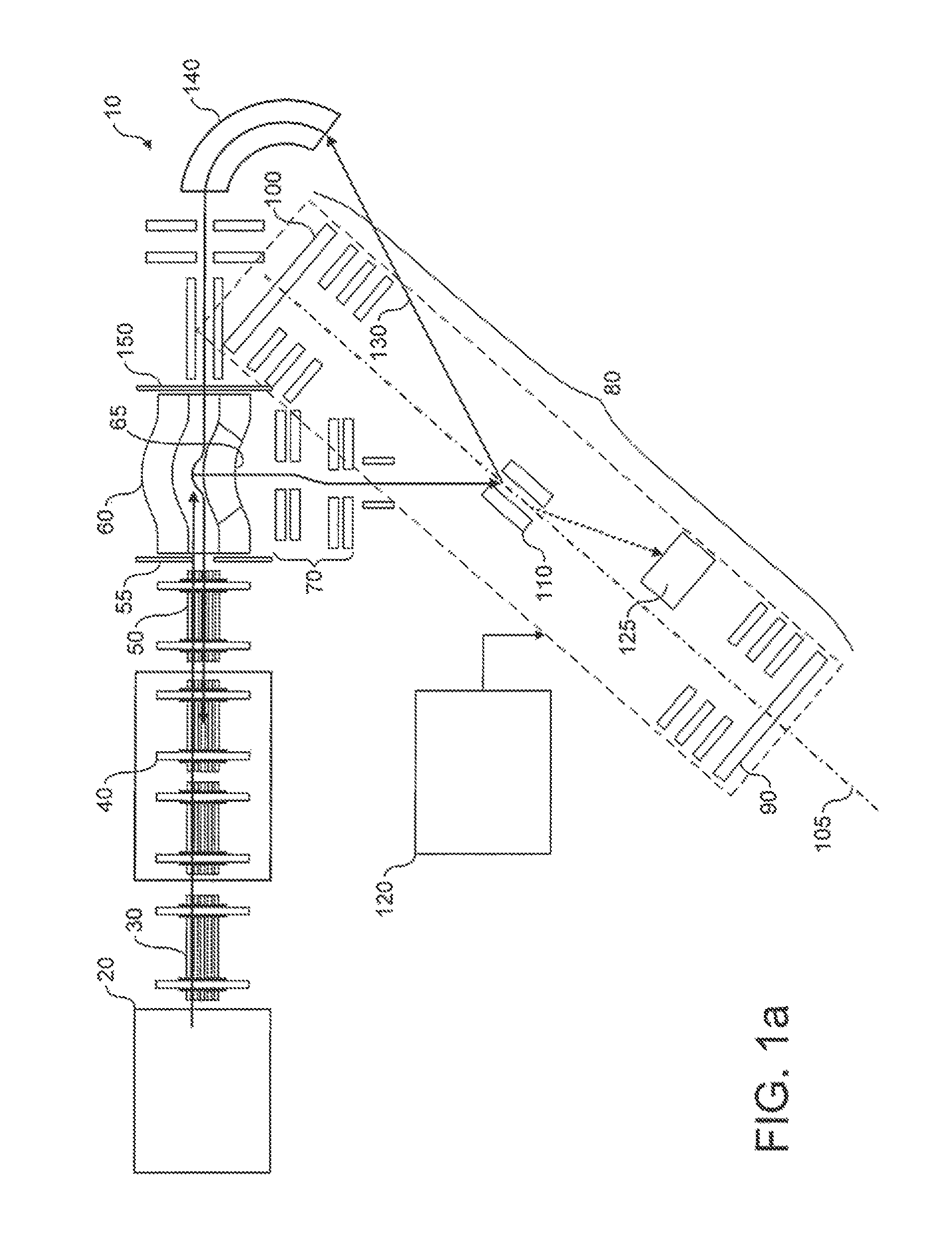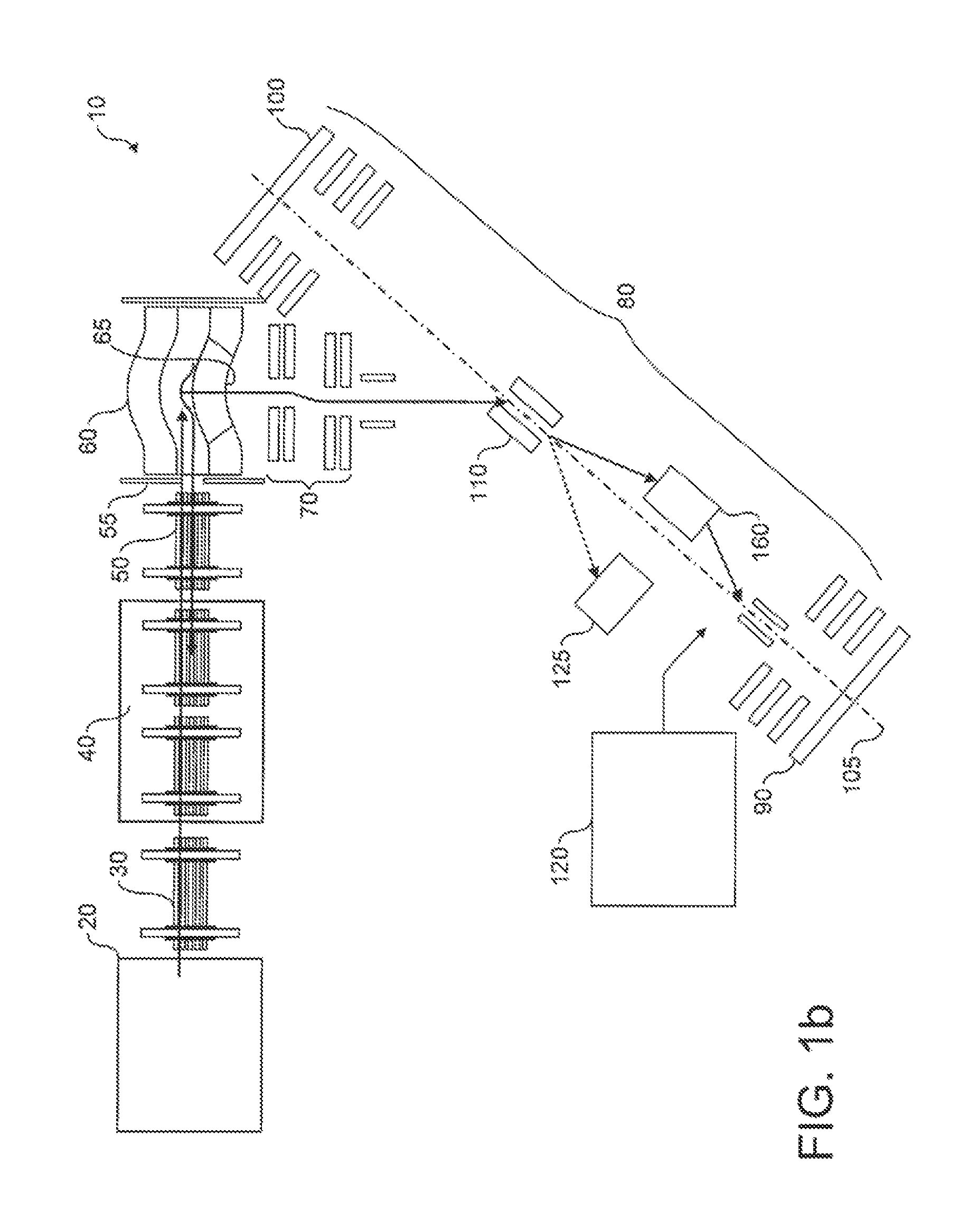Multiple ion isolation in multi-reflection systems
a multi-reflection system and ion isolation technology, applied in the field of charged particle traps, can solve the problems of limiting the useful time period, unable to select ions with high mass resolution, and further to be gained, so as to reduce the required separation in time
- Summary
- Abstract
- Description
- Claims
- Application Information
AI Technical Summary
Benefits of technology
Problems solved by technology
Method used
Image
Examples
Embodiment Construction
[0031]FIG. 1a shows an embodiment of a mass spectrometer 10 in accordance with the present invention. The mass spectrometer comprises an external ionisation source 20, such as an electrospray ion source or a MALDI ion source, which generates a continuous or pulsed stream of charged particles to be analysed. The charged particles pass through first ion optics 30 and into a pre-trap 40. The ions are confined in the pre-trap 40 to permit accumulation of ions from the ion source 20, after which they are injected into an rf-only injection trap 60, via second ion optics 50. The injection trap 60 may be a linear quadrupole trap, a linear octapole trap, and so forth. In the preferred embodiment, however, a curved linear trap, preferably with rf switching, is employed. This trap receives ions from the pre-trap 40 through a first entrance aperture 55, stores them in the curved linear trap, and then ejects them orthogonally through an ion exit aperture 65. Ions leaving the ion exit aperture 65...
PUM
 Login to View More
Login to View More Abstract
Description
Claims
Application Information
 Login to View More
Login to View More - R&D
- Intellectual Property
- Life Sciences
- Materials
- Tech Scout
- Unparalleled Data Quality
- Higher Quality Content
- 60% Fewer Hallucinations
Browse by: Latest US Patents, China's latest patents, Technical Efficacy Thesaurus, Application Domain, Technology Topic, Popular Technical Reports.
© 2025 PatSnap. All rights reserved.Legal|Privacy policy|Modern Slavery Act Transparency Statement|Sitemap|About US| Contact US: help@patsnap.com



